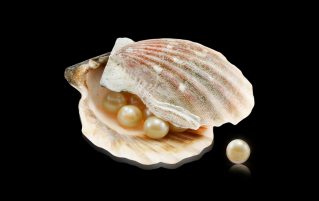

While studying covalent bonding in your science lessons, you will be familiar with graphite, and we have all heard of diamonds. But how much do you know about different gemstones?
Minerals, stones or organic matter which can be treated and used, for example in jewellery, are known as gemstones. Metamorphism, immense heat and pressure inside the Earth forcing the minerals together forms most gemstones. Diamonds are the hardest of all the gemstones. The Ancient Greek word “adamas” can be translated as meaning invincible or unconquerable. This is where the word diamond originates from, recognising how strong diamond actually is. Experts estimate the formation of diamonds began more than three billion years ago.
Pearls, on the other hand, are not formed within the Earth. Marine oysters and freshwater mussels make pearls. Basically, they are formed as a defence mechanism against parasites, or injury. Their bodies are very fragile, so need a means of defence. If something unwanted enters the shell – the oyster will cover it with layers of aragonite and conchiolin, the same materials that make its shell. This creates a material called nacre (or mother-of-pearl) which completely surrounds the unwanted invader, protecting their bodies. The nacre is what makes pearls shiny. However, some pearls have very little, or no nacre at all. Their appearance is more chalky. Pearls can range in size from as little as peppercorns to as big as a basketball!
A giant clam formed the Giga Pearl, the largest non-nacreous pearl in the world. The Giga Pearl weighs 27kg, and is worth £150 million. The largest nacreous pearl is The Pearl of Asia, dating back to the 17th Century.
GCSE scientists – you need to be able to explain the properties of covalent compounds. Our new guide “How to work with Covalent Bonding: Part 2” will help you. It describes and explains the properties of both simple covalent molecules, and giant covalent structures like diamond and graphite. It also includes questions, and answers for you to check your understanding.
Click on the picture below to see the guide.
If you found this useful and think you would benefit from some additional help, please contact us.
